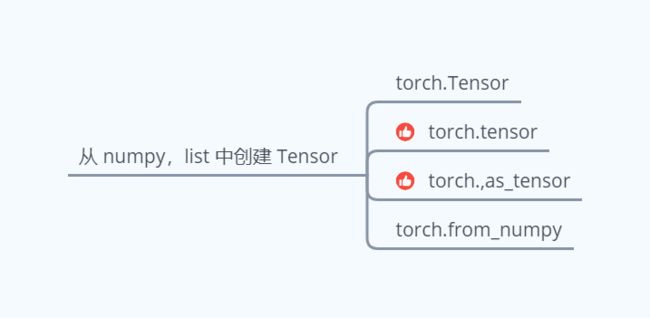- python多线程锁实战_Python多线程锁
7Nut7
python多线程锁实战
在多线程程序执行过程中,为什么需要给一些线程加锁以及如何加锁,下面就来说一说。1.给线程加锁的原因我们知道,不同进程之间的内存空间数据是不能够共享的,试想一下,如果可以随意共享,谈何安全?但是一个进程中的多个线程是可以共享这个进程的内存空间中的数据的,比如多个线程可以同时调用某一内存空间中的某些数据(只是调用,没有做修改)。试想一下,在某一进程中,内存空间中存有一个变量对象的值为num=8,假如某
- .net 启动mysql数据库连接,ASP.NET实战002:MySQL数据库连接
CodeConjurer
.net启动mysql数据库连接
数据库管理系统数据库是用来存放数据的仓库,它拥有很大的存储空间,可以用来存放我们系统的所有数据。而数据库管理系统(DBMS)是为管理数据库而设计的系统,可以对文件中的数据进行新增、截取、更新、删除、查询、备份等操作,最主要是安全可靠、灵活高效、性能优越。目前主流的数据库管理系统有:Oracle、MySQL、SQLServer、PostgreSQL、MongoDB、DB2、Redis等,今天主要分享
- PyInstaller 构建的 Windows EXE 因多处理而失败
潮易
windows
PyInstaller构建的WindowsEXE因多处理而失败PyInstaller是Python一个用于将Python脚本打包成可执行的exe文件的工具,但是它并不支持所有Python库,尤其是那些依赖于C扩展或使用PythonCAPI的库。如果你的程序在使用某些不支持的库时失败了,那么你可能需要寻找其他的解决方案,如使用其他的打包工具或者修改你的代码以适应这些库。以下是一个详细的步骤,说明如何
- 给Wordpress添加评分功能到评论表单
鱼仰泳
WordPress开发手记WordPressPHPcss前端网站开发
今天要给你的Wordpress添加评分功能到评论表单吗?评分功能效果图什么类型的网站需要评分?资源站教程站其他,我也没想到。。。但我这个网站,因为是电影类的网站,好像还是有点需要的,所以,我就给它加上。修改后台代码(functions.php)添加评分代码首先,你需要将下面代码复制到functions.php中://添加打分脚本到评论表单//codebyyangjiyongVX:uu0216fun
- 使用工具深度优化Docker镜像
ivwdcwso
运维docker容器云原生
1.引言Docker镜像优化是容器化应用开发中的关键环节。一个优化良好的镜像不仅可以减少存储和传输成本,还能提升应用的启动速度和安全性。然而,优化镜像的同时,必须确保镜像的功能不受影响。本文将从专业研究员的角度,详细介绍如何使用工具深度优化Docker镜像,并确保优化后的镜像能够正常运行。2.Docker镜像优化的核心目标减小镜像体积:减少存储和传输成本。提升构建效率:通过缓存和并行构建减少构建时
- TypeScript 学习笔记(七):TypeScript 与后端框架的结合应用
Evaporator Core
typescript前端框架学习
1.引言在前几篇学习笔记中,我们已经探讨了TypeScript的基础知识和在前端框架(如Angular和React)中的应用。本篇将重点介绍TypeScript在后端开发中的应用,特别是如何与Node.js和Express结合使用,以构建强类型、可维护的后端应用。2.TypeScript与Node.jsNode.js是一个基于ChromeV8引擎的JavaScript运行时,广泛用于构建后端应用。
- 在Android 15的设备上关闭edge-to-edge功能
庄风子
Androidandroid
Android15在开发上有很多更新,当APP的targetSdk设置为35,且设备系统为Android15时,APP会自动启动edge-to-edge功能。虽然可视面积变大了,但界面布局也会受影响。如果要强制关闭edge-to-edge功能。可以在style.xml中将windowOptOutEdgeToEdgeEnforcement设置为false,并且指定targetApi为35。true然
- Chromium 132 编译指南 Mac篇(一)- 环境准备
守城小轩
浏览器开发chromedevtools浏览器开发指纹浏览器chrome
1.引言在当今浏览器领域,开源项目Chromium的地位举足轻重。作为GoogleChrome浏览器的技术核心,Chromium不仅驱动着这款全球流行的浏览器,还为众多衍生浏览器项目奠定了坚实的基础。对于热衷于浏览器技术研究,或有志于开发自有浏览器的开发者来说,掌握Chromium的编译技术是迈向成功的第一步。本指南将聚焦于macOS平台,为开发者提供一份详尽的Chromium132编译入门教程。
- Node.js --- 模板引擎EJS
蒜蓉大猩猩
Node.jsnode.js后端express中间件
1.前言模板引擎是一种工具或库,用于在开发中生成动态内容的HTML页面。它通过将预定义的模板与数据结合,生成最终的输出(如HTML页面、字符串等)。模板引擎广泛应用于前端和后端开发,尤其是在构建动态网站时。2.EJS模板引擎EJS(EmbeddedJavaScriptTemplates)是一种模板引擎,可以帮助我们在HTML页面中嵌入JavaScript代码,用于动态渲染内容。EJS语法简洁且与H
- Python 对海表面温度进行EOF分解与前n模态合成
我有一个梦想——人在家中葛优躺
pythonmatplotlib
一、EOF分解数据来源:来自NOAA的2017-2021年0.25°×0.25°的日平均OISST数据(海表面温度数据)。关于EOF的理解:利用2017-2020年4年数据进行EOF分解,2021年1月1日的数据来做合成检验。对长度是1461的二维海表面温度数据进行分解,分解得到的时间序列一共1461组长度1461的时间序列,一共1461个二维空间模态。按照方差大小从前到后。代码实现:import
- git命令手册
哈~~哈~
git
生成秘钥:ssh-keygen#切换目标分支(以master为目标分支为例)gitcheckoutmaster#拉取仓库master分支的最新版本gitpull#本地备份gitbranchbackup#删除本地分支gitbranch-Dmaster#在master分支下创建分支gitchekcoutmaster#强制推送到远程gitpush-f-uoriginmaster#列出远程分支gitbra
- 「C/C++」C++关键字 之 mutable 可变变量关键字
何曾参静谧
c语言c++java
✨博客主页何曾参静谧的博客(✅关注、点赞、⭐收藏、转发)全部专栏(专栏会有变化,以最新发布为准)「Win」Windows程序设计「IDE」集成开发环境「定制」定制开发集合「C/C++」C/C++程序设计「DSA」数据结构与算法「UG/NX」NX二次开发「QT」QT5程序设计「File」数据文件格式「UG/NX」BlockUI集合「Py」Python程序设计「Math」探秘数学世界「PK」Paras
- 华为 Ascend 平台 YOLOv5 目标检测推理教程
Lunar*
目标检测华为YOLO目标检测
1.背景介绍随着人工智能技术的快速发展,目标检测在智能安防、自动驾驶、工业检测等领域中扮演了重要角色。YOLOv5是一种高效的目标检测模型,凭借其速度和精度的平衡广受欢迎。华为Ascend推理框架(ACL)是AscendCANN软件栈的核心组件,专为AscendAI加速硬件(如Atlas300I)设计,可实现高性能的深度学习推理。在本文中,我们将介绍如何基于华为AscendACL推理框架对YOLO
- 【OpenCV入门学习--python】绘图函数
喜欢星星的田螺姑娘
OpenCVopencvpython学习
源代码:(查看教材《OpenCV-Python中文教程》段力辉译)importnumpyasnpimportcv2#Createablackimageimg=np.zeros((512,512,3),np.uint8)#将所有像素点的各通道数值赋0#其中“3”是三个通道的意思#np.zeros函数用于创建一个数值全为0的矩阵,np.ones用于创建一个数值全为1的矩阵#Drawadiagonalb
- Mac pnpm安装
是二牙
前端vue.js
安装pnpm的时候一定要把npm更新到最新版不然pnpm下载不成功。(更新npm):sudonpminstall-gnpm(安装pnpm:)sudonpminstall-gpnpm检验安装是否成功:pnpm--version项目内安装依赖:pnpminstall/运行项目:pnpmdev最近在开发vue3的项目后续应该会更新一些关于v3的笔记以往都是开发的v2现在开始学习v3如果写的不对的地方可以
- jdbc连接出现ServerTimezone问题
一个小坑货
常见错误积累mysqljava
代码中添加时区需要在jdbc的url连接中添加serverTimezone=Asia/Shanghai。例如:jdbc:mysql://localhost:3306/db1?serverTimezone=Asia/Shanghaijdbc:mysql://localhost:3306/db1?serverTimezone=GMTIdea链接mysql错误Idea链接mysql错误—Goto‘Adv
- CentOS 9 Stream 中查看 Python 版本并升级 Python
一个小坑货
CentOS9StreamPythonpythoncentos开发语言
CentOS9Stream中查看Python版本并升级Python1.查看当前Python版本2.升级Python版本(1)安装开发工具(2)安装必要的依赖包(3)下载和安装新版本的Python(4)验证安装3.更新`python`和`python3`命令(可选)4.安装pip(如果没有安装)5.升级pip(可选)在CentOS9Stream中查看Python版本并升级Python版本的方法如下:
- 为什么要使用MQ?思维导图 代码示例(java 架构)
用心去追梦
java架构开发语言
使用消息队列(MQ)的主要原因在于它能够提供解耦、异步通信、流量削峰等特性,这些特性对于构建稳定、高效、可扩展的分布式系统至关重要。下面是关于为什么使用MQ的详细解释,包括思维导图建议和Java代码示例。为什么要使用MQ思维导图建议解耦应用程序之间减少直接依赖灵活地添加或移除服务数据库与应用逻辑分离防止数据库过载异步处理提升响应速度用户无需等待长时间操作完成改善用户体验页面加载更快流量削峰处理突发
- 【多线程】Java中的多线程
ainioayi
java多线程
Java中的多线程1.1Java中的多线程Java程序的进程里有几个线程:主线程,垃圾回收线程(后台线程)等在Java中,当我们启动main函数时其实就是启动了一个JVM的进程,而main函数所在的线程就是这个进程中的一个线程,也称主线程。Java支持多线程,当Java程序执行main方法的时候,就是在执行一个名字叫做main的线程,可以在main方法执行时,开启多个线程A,B,C,多个线程mai
- MySQL事物原理
bxnms.
mysql数据库
事务在MySQL服务中,系统的主线程负责监听连接,而多个连接线程负责处理连接。这时候多个SQL语句操作数据库,就会出现事务多并发,交叉处理。比如银行存钱后再取钱,如果存钱的中途撤销操作,但取钱操作已经完成等等。事务是一个工作单元,它由一系列操作组成,这些操作要么全部成功,要么全部失败,不会结束在中间某个点。在MySQL中,客户端想要开启事务就要向MySQL发送开启事务请求,再发送一系列SQL语句,
- 代码结构与模块化设计:Python 项目架构与高效开发技巧
全栈探索者chen
pythonpython架构开发语言模块化性能优化程序人生案例分析
代码结构与模块化设计:Python项目架构与高效开发技巧目录为什么模块化设计是高效开发的基础Python项目的理想目录结构模块与包:概念与使用详解模块化设计的核心原则常见设计模式与模块化案例分析:从零搭建模块化Python项目高级技巧:动态模块加载与插件化设计模块化开发中的常见问题与解决方案总结与实践建议1.为什么模块化设计是高效开发的基础模块化设计是一种将复杂的软件系统分解为多个小模块的开发方式
- 构建复杂UI布局的策略与实践
QT性能优化QT原理源码QT界面美化
qtqt6.3qt5QT教程c++
构建复杂UI布局的策略与实践补天云火鸟博客创作软件补天云网站1QT_Widgets与复杂UI布局概述1.1QT_Widgets基础及其在UI设计中的作用1.1.1QT_Widgets基础及其在UI设计中的作用QT_Widgets基础及其在UI设计中的作用构建复杂UI布局的策略与实践,QtWidgets基础及其在UI设计中的作用在软件开发领域,尤其是用户界面(UserInterface,UI)设计中
- Vue.js组件开发-如何实现表头搜索
LCG元
前端vue.js
在Vue.js组件开发中,实现表头搜索通常涉及在表格组件的表头添加输入框,并让用户能够输入搜索关键字来过滤表格数据。以下是一个使用ElementUI的el-table组件实现表头搜索的示例:一、准备阶段确保ElementUI已安装:确保Vue项目中已经安装了ElementUI,并且已经在项目中引入。准备表格数据:在Vue组件中准备一份表格数据,通常是一个数组。二、实现表头搜索定义搜索关键
- Node的基本模块
ma_no_lo
node前端javascript大数据htmlnode.js
一,fs模块1.读fs用于文件,文件夹读写,以下是一些基本的api使用实例constfs=require("fs");首先,我们引入fs模块,这里用的是commonjs,也可以使用import,但是捣鼓费劲。引入模块后,对于读写,fs提供三种方式:第一种,同步,或者叫阻塞。在这种模式下,代码会阻塞在读取文件这一行代码上,直至完成任务后,程序才会继续。constres=fs.readFileSync
- nodejs版本管理,使用 nvm 删除node版本,要删除 Node.js 的某个版本详细操作
m0_74825108
node.js
要删除Node.js的某个版本并保持NodeVersionManager(nvm)的管理整洁,可以按以下步骤操作:步骤1:查看已安装的Node.js版本nvmls这会列出你通过nvm安装的所有Node.js版本。输出类似于:->v18.17.1v16.20.2v14.21.3default->v18.17.1带箭头(->)的是当前使用的版本。步骤2:卸载某个版本使用以下命令卸载特定版本:nvmun
- Word表格批量提取数据到Excel,批量提取,我爱excel
流形填表
excelword
Word表格批量提取数据到Excel,Word导出到Excel-我爱Excel助你高效办公在日常办公中,Word表格常常用于记录和整理数据,但将这些数据从Word提取到Excel,特别是当涉及多个文件时,常常让人头疼。如果你经常需要将多个Word文档中的表格数据导出到Excel,本文将介绍如何通过“我爱Excel”工具,实现高效的Word表格批量提取和导出,提升你的办公效率。什么是Word表格批量
- 试题转excel;word转excel;大风车excel(1.1更新)
流形填表
excelword
更新了大风车excel1.1版本主要优化在算法层面:1.0版本试题解析的成功率为95%,现在1.1版本已经优化到解析成功率为99%一、问题描述一名教师朋友,偶尔会需要整理一些高质量的题目到excel中以往都是手动复制搬运,几百道题几乎需要一个下午的时间关键这些事,枯燥无聊费眼睛,实在是看起来就很蠢的工作就想着做一个工具,可以自动处理这个工作,自动将word试题按照要求写入excel中,自动整理试题
- Word表格批量提取数据到Excel,批量提取,我爱excel
流形填表
wordexcel
Word表格批量提取数据到Excel,Word导出到Excel-我爱Excel助你高效办公在日常办公中,Word表格常常用于记录和整理数据,但将这些数据从Word提取到Excel,特别是当涉及多个文件时,常常让人头疼。如果你经常需要将多个Word文档中的表格数据导出到Excel,本文将介绍如何通过“我爱Excel”工具,实现高效的Word表格批量提取和导出,提升你的办公效率。什么是Word表格批量
- 试题转excel;试题整理;试卷转Excel,word试题转excel
流形填表
excelword
一、问题描述我父亲是一名教师,偶尔会需要整理一些高质量的题目到excel中以往都是手动复制搬运,几百道题几乎需要一个下午的时间关键这些事,枯燥无聊费眼睛,实在是看起来就很蠢的工作就想着做一个工具,可以自动处理这个工作,自动将word试题按照要求写入excel中,自动整理试题比如:图片中有550道选择题的文档,有很多不需要的信息,开头语,页眉页脚,还有广告、水印我也看了市面上一些处理方法大都是用正则
- 行为识别的方法
人工智能专属驿站
深度学习
行为识别主要有以下几大类方法,每类方法各有特点及典型算法:传统方法特点:利用手工设计特征对行为进行表征,再用统计学习的分类方法进行识别。需一定专业知识设计特征,耗费人力物力,对复杂场景、遮挡等适应性差,但对简单背景、规则动作识别效果尚可。典型算法:时空关键点(Space-TimeInterestPoints):基于视频图像中的关键点在时空维度上的变化来提取动作特征,但可能忽略视频细节,泛化能力较弱
- Java常用排序算法/程序员必须掌握的8大排序算法
cugfy
java
分类:
1)插入排序(直接插入排序、希尔排序)
2)交换排序(冒泡排序、快速排序)
3)选择排序(直接选择排序、堆排序)
4)归并排序
5)分配排序(基数排序)
所需辅助空间最多:归并排序
所需辅助空间最少:堆排序
平均速度最快:快速排序
不稳定:快速排序,希尔排序,堆排序。
先来看看8种排序之间的关系:
1.直接插入排序
(1
- 【Spark102】Spark存储模块BlockManager剖析
bit1129
manager
Spark围绕着BlockManager构建了存储模块,包括RDD,Shuffle,Broadcast的存储都使用了BlockManager。而BlockManager在实现上是一个针对每个应用的Master/Executor结构,即Driver上BlockManager充当了Master角色,而各个Slave上(具体到应用范围,就是Executor)的BlockManager充当了Slave角色
- linux 查看端口被占用情况详解
daizj
linux端口占用netstatlsof
经常在启动一个程序会碰到端口被占用,这里讲一下怎么查看端口是否被占用,及哪个程序占用,怎么Kill掉已占用端口的程序
1、lsof -i:port
port为端口号
[root@slave /data/spark-1.4.0-bin-cdh4]# lsof -i:8080
COMMAND PID USER FD TY
- Hosts文件使用
周凡杨
hostslocahost
一切都要从localhost说起,经常在tomcat容器起动后,访问页面时输入http://localhost:8088/index.jsp,大家都知道localhost代表本机地址,如果本机IP是10.10.134.21,那就相当于http://10.10.134.21:8088/index.jsp,有时候也会看到http: 127.0.0.1:
- java excel工具
g21121
Java excel
直接上代码,一看就懂,利用的是jxl:
import java.io.File;
import java.io.IOException;
import jxl.Cell;
import jxl.Sheet;
import jxl.Workbook;
import jxl.read.biff.BiffException;
import jxl.write.Label;
import
- web报表工具finereport常用函数的用法总结(数组函数)
老A不折腾
finereportweb报表函数总结
ADD2ARRAY
ADDARRAY(array,insertArray, start):在数组第start个位置插入insertArray中的所有元素,再返回该数组。
示例:
ADDARRAY([3,4, 1, 5, 7], [23, 43, 22], 3)返回[3, 4, 23, 43, 22, 1, 5, 7].
ADDARRAY([3,4, 1, 5, 7], "测试&q
- 游戏服务器网络带宽负载计算
墙头上一根草
服务器
家庭所安装的4M,8M宽带。其中M是指,Mbits/S
其中要提前说明的是:
8bits = 1Byte
即8位等于1字节。我们硬盘大小50G。意思是50*1024M字节,约为 50000多字节。但是网宽是以“位”为单位的,所以,8Mbits就是1M字节。是容积体积的单位。
8Mbits/s后面的S是秒。8Mbits/s意思是 每秒8M位,即每秒1M字节。
我是在计算我们网络流量时想到的
- 我的spring学习笔记2-IoC(反向控制 依赖注入)
aijuans
Spring 3 系列
IoC(反向控制 依赖注入)这是Spring提出来了,这也是Spring一大特色。这里我不用多说,我们看Spring教程就可以了解。当然我们不用Spring也可以用IoC,下面我将介绍不用Spring的IoC。
IoC不是框架,她是java的技术,如今大多数轻量级的容器都会用到IoC技术。这里我就用一个例子来说明:
如:程序中有 Mysql.calss 、Oracle.class 、SqlSe
- 高性能mysql 之 选择存储引擎(一)
annan211
mysqlInnoDBMySQL引擎存储引擎
1 没有特殊情况,应尽可能使用InnoDB存储引擎。 原因:InnoDB 和 MYIsAM 是mysql 最常用、使用最普遍的存储引擎。其中InnoDB是最重要、最广泛的存储引擎。她 被设计用来处理大量的短期事务。短期事务大部分情况下是正常提交的,很少有回滚的情况。InnoDB的性能和自动崩溃 恢复特性使得她在非事务型存储的需求中也非常流行,除非有非常
- UDP网络编程
百合不是茶
UDP编程局域网组播
UDP是基于无连接的,不可靠的传输 与TCP/IP相反
UDP实现私聊,发送方式客户端,接受方式服务器
package netUDP_sc;
import java.net.DatagramPacket;
import java.net.DatagramSocket;
import java.net.Ine
- JQuery对象的val()方法执行结果分析
bijian1013
JavaScriptjsjquery
JavaScript中,如果id对应的标签不存在(同理JAVA中,如果对象不存在),则调用它的方法会报错或抛异常。在实际开发中,发现JQuery在id对应的标签不存在时,调其val()方法不会报错,结果是undefined。
- http请求测试实例(采用json-lib解析)
bijian1013
jsonhttp
由于fastjson只支持JDK1.5版本,因些对于JDK1.4的项目,可以采用json-lib来解析JSON数据。如下是http请求的另外一种写法,仅供参考。
package com;
import java.util.HashMap;
import java.util.Map;
import
- 【RPC框架Hessian四】Hessian与Spring集成
bit1129
hessian
在【RPC框架Hessian二】Hessian 对象序列化和反序列化一文中介绍了基于Hessian的RPC服务的实现步骤,在那里使用Hessian提供的API完成基于Hessian的RPC服务开发和客户端调用,本文使用Spring对Hessian的集成来实现Hessian的RPC调用。
定义模型、接口和服务器端代码
|---Model
&nb
- 【Mahout三】基于Mahout CBayes算法的20newsgroup流程分析
bit1129
Mahout
1.Mahout环境搭建
1.下载Mahout
http://mirror.bit.edu.cn/apache/mahout/0.10.0/mahout-distribution-0.10.0.tar.gz
2.解压Mahout
3. 配置环境变量
vim /etc/profile
export HADOOP_HOME=/home
- nginx负载tomcat遇非80时的转发问题
ronin47
nginx负载后端容器是tomcat(其它容器如WAS,JBOSS暂没发现这个问题)非80端口,遇到跳转异常问题。解决的思路是:$host:port
详细如下:
该问题是最先发现的,由于之前对nginx不是特别的熟悉所以该问题是个入门级别的:
? 1 2 3 4 5
- java-17-在一个字符串中找到第一个只出现一次的字符
bylijinnan
java
public class FirstShowOnlyOnceElement {
/**Q17.在一个字符串中找到第一个只出现一次的字符。如输入abaccdeff,则输出b
* 1.int[] count:count[i]表示i对应字符出现的次数
* 2.将26个英文字母映射:a-z <--> 0-25
* 3.假设全部字母都是小写
*/
pu
- mongoDB 复制集
开窍的石头
mongodb
mongo的复制集就像mysql的主从数据库,当你往其中的主复制集(primary)写数据的时候,副复制集(secondary)会自动同步主复制集(Primary)的数据,当主复制集挂掉以后其中的一个副复制集会自动成为主复制集。提供服务器的可用性。和防止当机问题
mo
- [宇宙与天文]宇宙时代的经济学
comsci
经济
宇宙尺度的交通工具一般都体型巨大,造价高昂。。。。。
在宇宙中进行航行,近程采用反作用力类型的发动机,需要消耗少量矿石燃料,中远程航行要采用量子或者聚变反应堆发动机,进行超空间跳跃,要消耗大量高纯度水晶体能源
以目前地球上国家的经济发展水平来讲,
- Git忽略文件
Cwind
git
有很多文件不必使用git管理。例如Eclipse或其他IDE生成的项目文件,编译生成的各种目标或临时文件等。使用git status时,会在Untracked files里面看到这些文件列表,在一次需要添加的文件比较多时(使用git add . / git add -u),会把这些所有的未跟踪文件添加进索引。
==== ==== ==== 一些牢骚
- MySQL连接数据库的必须配置
dashuaifu
mysql连接数据库配置
MySQL连接数据库的必须配置
1.driverClass:com.mysql.jdbc.Driver
2.jdbcUrl:jdbc:mysql://localhost:3306/dbname
3.user:username
4.password:password
其中1是驱动名;2是url,这里的‘dbna
- 一生要养成的60个习惯
dcj3sjt126com
习惯
一生要养成的60个习惯
第1篇 让你更受大家欢迎的习惯
1 守时,不准时赴约,让别人等,会失去很多机会。
如何做到:
①该起床时就起床,
②养成任何事情都提前15分钟的习惯。
③带本可以随时阅读的书,如果早了就拿出来读读。
④有条理,生活没条理最容易耽误时间。
⑤提前计划:将重要和不重要的事情岔开。
⑥今天就准备好明天要穿的衣服。
⑦按时睡觉,这会让按时起床更容易。
2 注重
- [介绍]Yii 是什么
dcj3sjt126com
PHPyii2
Yii 是一个高性能,基于组件的 PHP 框架,用于快速开发现代 Web 应用程序。名字 Yii (读作 易)在中文里有“极致简单与不断演变”两重含义,也可看作 Yes It Is! 的缩写。
Yii 最适合做什么?
Yii 是一个通用的 Web 编程框架,即可以用于开发各种用 PHP 构建的 Web 应用。因为基于组件的框架结构和设计精巧的缓存支持,它特别适合开发大型应
- Linux SSH常用总结
eksliang
linux sshSSHD
转载请出自出处:http://eksliang.iteye.com/blog/2186931 一、连接到远程主机
格式:
ssh name@remoteserver
例如:
ssh
[email protected]
二、连接到远程主机指定的端口
格式:
ssh name@remoteserver -p 22
例如:
ssh i
- 快速上传头像到服务端工具类FaceUtil
gundumw100
android
快速迭代用
import java.io.DataOutputStream;
import java.io.File;
import java.io.FileInputStream;
import java.io.FileNotFoundException;
import java.io.FileOutputStream;
import java.io.IOExceptio
- jQuery入门之怎么使用
ini
JavaScripthtmljqueryWebcss
jQuery的强大我何问起(个人主页:hovertree.com)就不用多说了,那么怎么使用jQuery呢?
首先,下载jquery。下载地址:http://hovertree.com/hvtart/bjae/b8627323101a4994.htm,一个是压缩版本,一个是未压缩版本,如果在开发测试阶段,可以使用未压缩版本,实际应用一般使用压缩版本(min)。然后就在页面上引用。
- 带filter的hbase查询优化
kane_xie
查询优化hbaseRandomRowFilter
问题描述
hbase scan数据缓慢,server端出现LeaseException。hbase写入缓慢。
问题原因
直接原因是: hbase client端每次和regionserver交互的时候,都会在服务器端生成一个Lease,Lease的有效期由参数hbase.regionserver.lease.period确定。如果hbase scan需
- java设计模式-单例模式
men4661273
java单例枚举反射IOC
单例模式1,饿汉模式
//饿汉式单例类.在类初始化时,已经自行实例化
public class Singleton1 {
//私有的默认构造函数
private Singleton1() {}
//已经自行实例化
private static final Singleton1 singl
- mongodb 查询某一天所有信息的3种方法,根据日期查询
qiaolevip
每天进步一点点学习永无止境mongodb纵观千象
// mongodb的查询真让人难以琢磨,就查询单天信息,都需要花费一番功夫才行。
// 第一种方式:
coll.aggregate([
{$project:{sendDate: {$substr: ['$sendTime', 0, 10]}, sendTime: 1, content:1}},
{$match:{sendDate: '2015-
- 二维数组转换成JSON
tangqi609567707
java二维数组json
原文出处:http://blog.csdn.net/springsen/article/details/7833596
public class Demo {
public static void main(String[] args) { String[][] blogL
- erlang supervisor
wudixiaotie
erlang
定义supervisor时,如果是监控celuesimple_one_for_one则删除children的时候就用supervisor:terminate_child (SupModuleName, ChildPid),如果shutdown策略选择的是brutal_kill,那么supervisor会调用exit(ChildPid, kill),这样的话如果Child的behavior是gen_
 关注"AI机器学习与深度学习算法"公众号 选择" 星标 "公众号,原创干货,第一时间送达
关注"AI机器学习与深度学习算法"公众号 选择" 星标 "公众号,原创干货,第一时间送达

